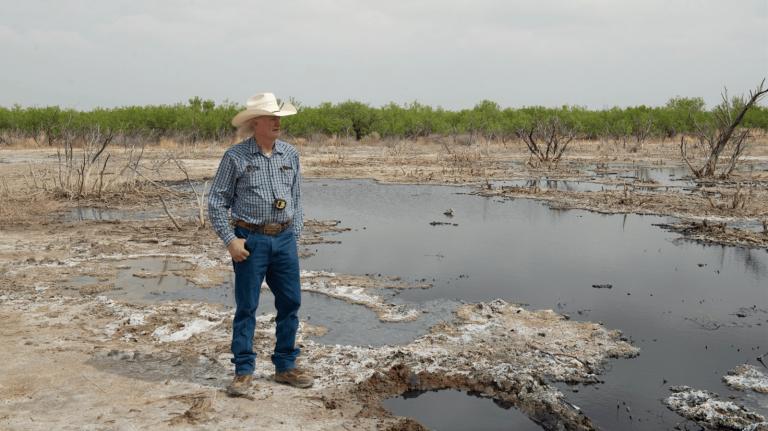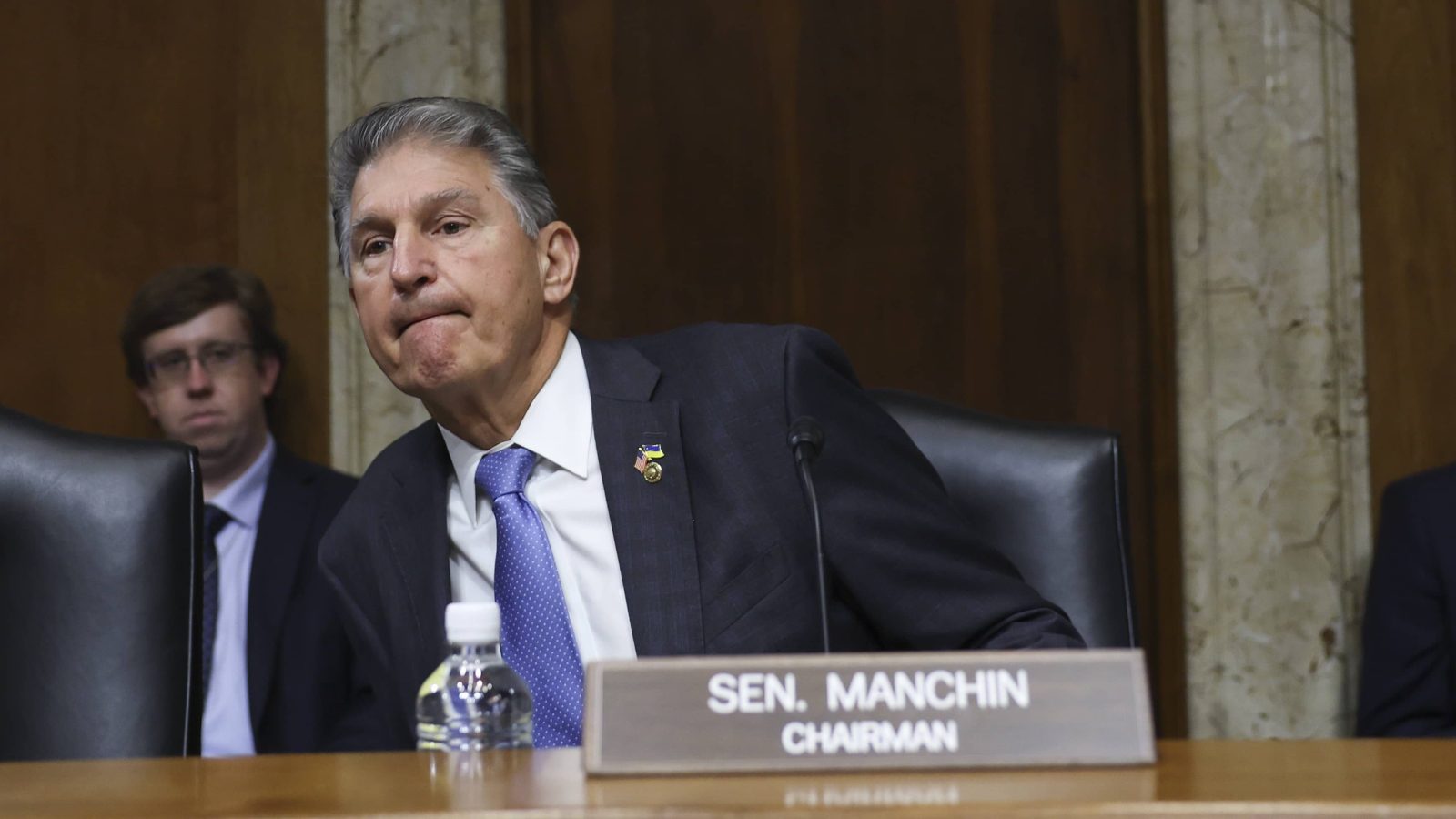Massachusetts has to reach net-zero emissions by 2050, the deadline the United Nations says is consistent with a livable planet, under a sweeping climate law signed by the state’s Republican governor last year. In order to do that, the Bay State plans to pipe in hydroelectric power from Canada. But the project has run into a roadblock: stiff opposition from the nearby state of Maine.
Last year, Maine voters rejected the buildout of a proposed transmission line, which would run through its western flank and carry power from dams in Quebec to customers in Massachusetts. As a result, the clean energy project is stalled, maybe indefinitely — the most recent legal setback occurred last week — and Massachusetts’ effort to wean itself off of fossil fuels has suffered a serious blow.
New England Clean Energy Connect, as the troubled Massachusetts project is called, is representative of a larger issue: Building new infrastructure in this country is a torturously slow process that often gets slowed down further by community opposition and legal challenges. Renewable and clean energy projects are particularly vulnerable to delay. Unlike natural gas pipelines, which are under the authority of an independent federal agency called the Federal Energy Regulatory Commission, or FERC, transmission lines are at the mercy of the states they run through.
As more states commit to new climate plans, more interstate transmission lines like the one Massachusetts is fighting to build will have to crisscross the United States. There are precious few other ways to get clean power from renewable sources like wind and solar farms, geothermal plants, and hydroelectric dams, often sited in rural areas, to the dense urban centers that want to plug into it. Congress could speed up transmission construction by becoming the ultimate referee on interstate power lines, but so far lawmakers have declined to step into that role. The issue has taken on new urgency ahead of the midterm elections, which could wrest congressional control away from Democrats and shake up the power dynamics in Washington. If Democrats can’t figure out a way to reform the permitting process before the end of the year, they may not get a chance to revisit it for a long time.
Meanwhile, experts predict that interstate squabbling over where transmission lines can go and who should shoulder their costs will continue to jeopardize new renewable energy projects as the nation scrambles to pump its patchwork of power grids full of renewable energy and make the tardy transition away from fossil fuels. “If you have an interstate transmission line, any state that that line is going through can veto the project,” John Larsen, who leads U.S. energy system and climate policy research for the independent research firm the Rhodium Group, told Grist. “It happens all the time.”
The ease with which a state can nix another state’s transmission line could derail the nation’s green aspirations and even undermine the historic climate change bill Congress passed in August, the Inflation Reduction Act. The Rhodium Group estimates that nearly a quarter of the emissions reductions that are expected to take place by 2030 won’t come to fruition if no new transmission is built in the U.S. Other groups say the climate bill would take an even bigger hit without reforms that shorten the review processes for renewable energy projects and spur the construction of new transmission lines.
Senator Joe Manchin, the conservative Democrat from West Virginia, proposed a plan in late September that would have made the green transition promised by the Inflation Reduction Act happen faster. He aimed to pass a permitting reform bill, legislation that would have prevented states from squabbling over some long-distance, interstate transmission projects and sped up the permitting process for all types of energy projects. But the bill fell apart in the Senate less than a week later after facing opposition from both Republican and progressive lawmakers.
Some GOP legislators didn’t support it because it was proposed by a Democrat and also because they were loath to hand transmission permitting, something that has long been in states’ remit, over to the federal government. Among progressives, one issue was that Manchin’s bill included a carveout for a natural gas pipeline in West Virginia called the Mountain Valley Pipeline that threatens water resources and communities in Appalachia and would add some 90 million metric tons of emissions to the U.S.’s carbon ledger every year. Another problem was that the bill revised and shortened the process by which federal agencies review the environmental impacts of major and minor infrastructure projects, which environmental justice advocates worried would increase the amount of pollution faced by low-income Black and brown communities.
But experts say that, despite its drawbacks, lawmakers blew a rare opportunity to address the country’s transmission problem by failing to pass Manchin’s bill. “The United States cannot reach its emissions goals, be a climate leader, or ensure that our energy is clean, affordable, reliable, and secure without permitting reform,” Josh Freed, the senior vice president for climate and energy at the Washington, D.C.-based think tank Third Way, told Grist.
Some Democratic members of Congress think so, too. “The good outweighed the bad, and there was definitely bad,” Sean Casten, a Democratic U.S. representative from Illinois, told Grist, referring to Manchin’s bill. (Prior to running for office, Casten occasionally wrote blog posts for Grist between 2007 and 2014.) Most Democratic senators — including another Democratic climate hawk, Brian Schatz of Hawaii — appeared prepared to pass the legislation, too.
Members of both political parties have bemoaned the barriers to expeditious permitting, but Congress rarely takes up legislation to reform the process. Larsen, who has been tracking these types of bills for decades now, said that, prior to Manchin’s bill, Congress had only seriously considered permitting reform twice in the past 20 years — first, in the Energy Policy Act of 2005 and then again in last year’s bipartisan infrastructure bill. Both laws tweaked the nation’s permitting rules, but neither resulted in the federal government taking control of the permitting process for transmission lines, which is, in Larsen’s view, the biggest permitting obstacle to the renewable energy transition.
Manchin’s bill, if it had passed, would have allowed FERC to permit some long-distance lines that are “consistent with the public interest,” in addition to simplifying the National Environmental Policy Act, or NEPA, and giving FERC jurisdiction over hydrogen pipelines. “The windows of opportunity for this stuff are very infrequent,” Larsen said.
But Manchin’s bill would have also made it easier for all types of energy projects to move forward, something that made progressives queasy. Casten said that that was a tradeoff he was willing to take. “My calculus, for better or for worse, is that if you streamline transmission permitting you will bring on clean energy assets at a rate that will economically neuter the fossil energy assets,” he said. In other words, he was comfortable making the gamble that easing the permitting process for transmission would result in large-scale renewable energy deployment. Eventually, renewables would become so cheap that new fossil fuel infrastructure wouldn’t be necessary.
Manchin pulled his bill from the government spending package it was attached to before senators could vote on it, knowing he didn’t have the Republican votes he needed to make it happen. In the coming weeks, experts anticipate that he could try to hitch a new version of the bill to an existing legislative package and pass it that way before the end of this congressional session. The only two viable candidates are the omnibus spending bill, a big package of appropriations bills, and the National Defense Authorization Act, the NDAA, which funds the military through the 2023 fiscal year. Congress will turn to those sometime between the midterm elections and the end of this year, the period known as a “lame-duck session.”
But there are risks to attaching permitting reform to one of these other bills, especially the NDAA, Casten said. Manchin will likely work with Republicans to come up with a new permitting reform bill that has their support, and that version of the bill could gut the National Environmental Policy Act, leading to the approval of infrastructure projects without adequate environmental reviews, or include provisions that allow states to drill for oil and gas on federal land within their state borders with less oversight than is currently in place. Such a bill already exists — it was proposed by Republican Senator Shelley Moore Capito, Manchin’s fellow senator from West Virginia — but it failed to pass after Democrats blocked it. It’ll be much harder for Democrats to nix a new permitting bill if it is attached to the NDAA because voting against military spending is politically unpopular.
“If there is a package that the Senate can accept in the NDAA, it will in all likelihood be worse,” Casten said. “How many Democrats are going to peel off over permitting and shut down military spending? That’s a really politically hard question.”
There’s also a scenario in which Republicans take back one or both houses of Congress next week and permitting reform is revisited under their terms. On Tuesday, Politico reported that House Republicans are planning an energy agenda that centers around much more aggressive permitting reforms that would significantly shorten environmental reviews for all types of energy projects. But they’re unlikely to be successful in the next two years.
“In the scenario where we lose one chamber, I’m not sure you do any of this,” Casten said. “For all the lip service Republicans pay to oil and gas permitting reform and NEPA repeal, they won’t have a White House that will sign off on it.”
Meanwhile, the clock is ticking. “We’re 28 years away from 2050,” Larsen, from Rhodium, said. “The longer we wait the less it’ll help.”



